This is part 2 of a series that walks through the slides in a pitch deck. See Start With the Problem, my post about how to build a better problem slide.
What is the solution slide?
A typical pitch deck starts with Problem -> Solution. State the problem and how you’ve solved it, then quickly move to the part where you hit $50M in year five. If it’s so easy then why do so many pitches fail right here?
More than any other part of your story, the solution is a startup’s DNA. It’s what explains why a company is unique, where it came from, and where it’s going.
The biggest mistake entrepreneurs make is combining solution with product. They aren’t the same. I recommend not mentioning your product in your solution slide. Explain what’s unique and not what was built.
Here’s an even better idea:
Rename this slide from ‘Solution’ to ‘Unique Approach’
Here are the key points I’ll cover:
- Don’t skip this slide
- Talk about alternatives
- Show how you overcome inertia
- Explain the roadmap
- A case study: Mazlite
- A checklist
Subscribe for free to receive weekly posts, a copy of my ebook Pitching a Leap of Faith, and invitations to my weekly Pitch Masterclass.
Don’t skip this slide.
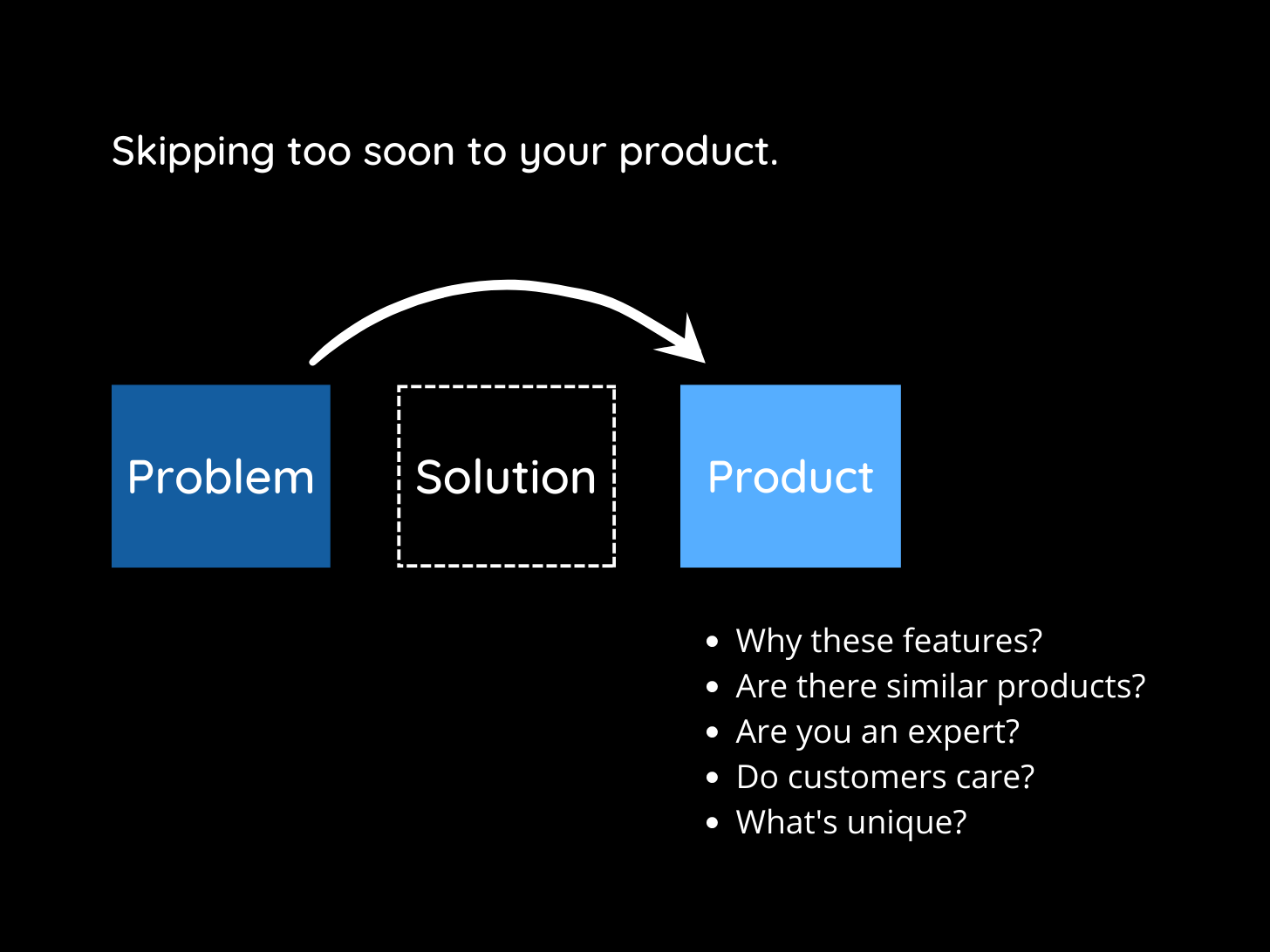
If you exclude this slide or jump from problem to product, you raise questions like: Why are you showing me these features? What else exists that’s better? Why are you an expert in this field?
Your Solution (or Unique Approach) slide should answer those questions. When I see “Problem” followed by “Introducing…Product X” I know there’s a missing discussion about what led to the product being built.
The AIR Method.
Studying hundreds of solution slides in pitch decks (where they existed at all), I’ve identified three ways to drastically improve solution slides:
- Alternatives - do you recognize they exist?
- Inertia - does your solution overcome it?
- Roadmap - is there a past and future story of your innovation?
1. Talk about Alternatives.
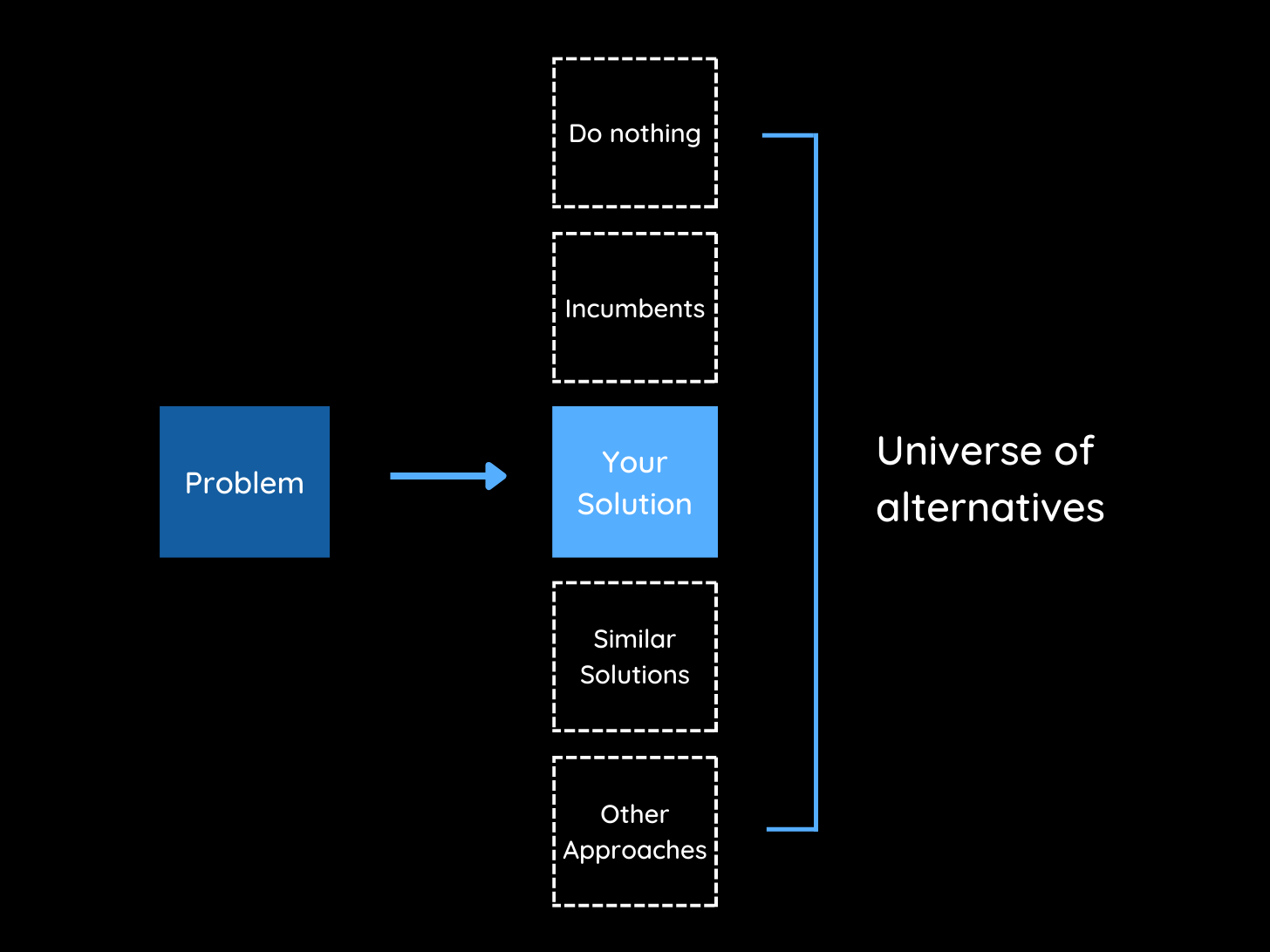
Your solution exists in a universe of alternatives. You should recognize other ways of solving the problem. Never talk about your solution as if it is the only solution, because it’s not.
Sidebar: I’m talking here about the story, not how to find problem-solution fit. For that read Ash Maurya’s Customer Forces Canvas.
Examples of stories that recognize alternatives:
- Everyone has gone right but our solution goes left
- Incumbents are big/expensive, we’re lean/affordable
- There are some competitors but most people still use Excel
2. Show how you overcome Inertia.
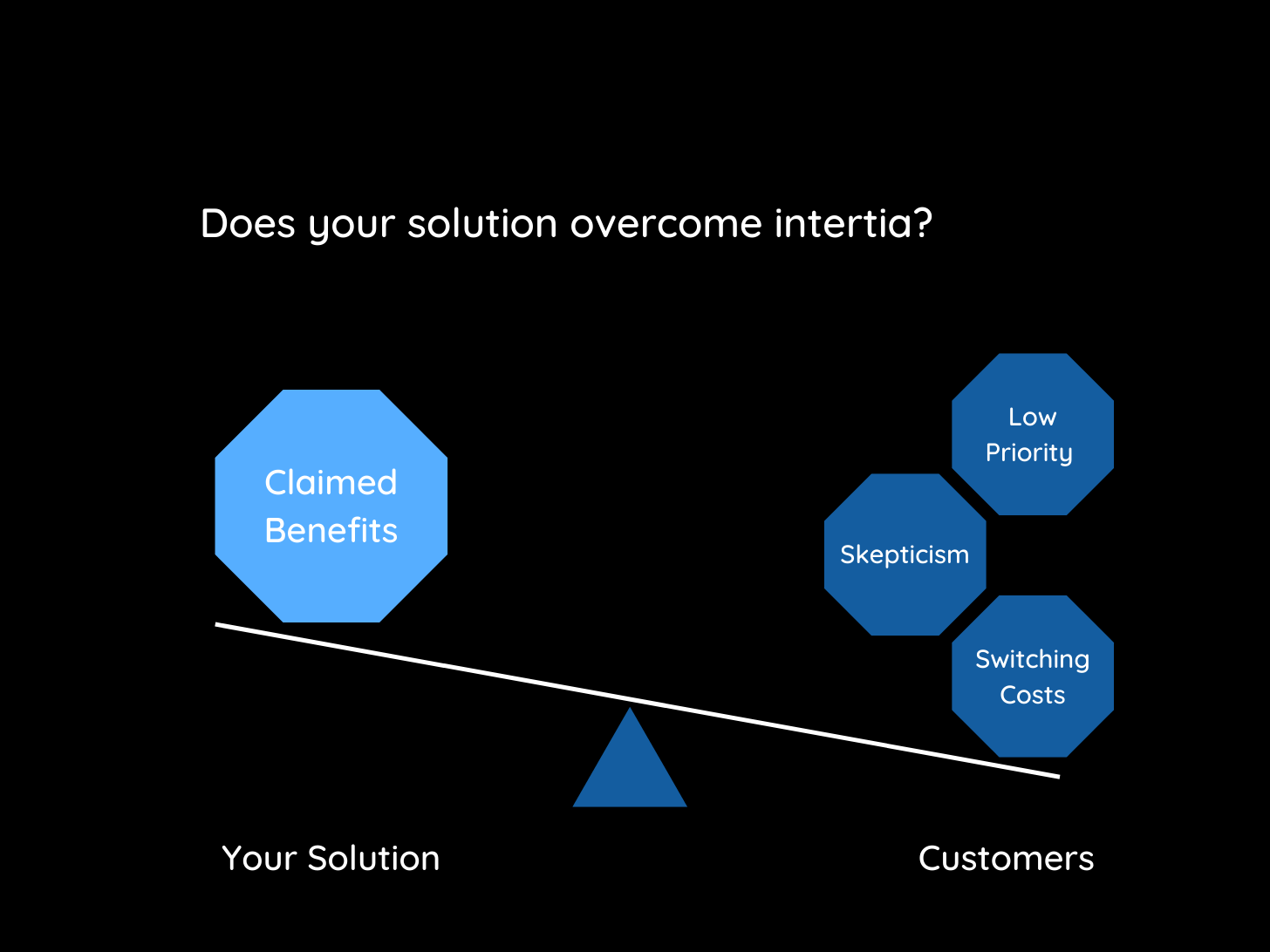
There are many reasons why people do not adopt new and better solutions. High real (or perceived) switching costs, budget cycles, or forces of habit. Explain not only how your approach is unique, but why your benefits are large enough to overcome inertia.
Two examples of how different is not necessarily better:
- Price - lower price is not necessarily a strong reason to adopt a new product. It has to be game-changingly lower, i.e. free, otherwise the marginal benefit may not outweigh the risk of trying something new.
- Integrated - many products’ claimed benefit is integration, i.e. a “one stop shop.” But changing customer behaviour in not one but many areas greatly increases the anxiety around switching. The benefits of an integrated product therefore have to be much greater.
“New” can mean shiny and exciting, but also unknown and scary.
3. Explain the Roadmap.
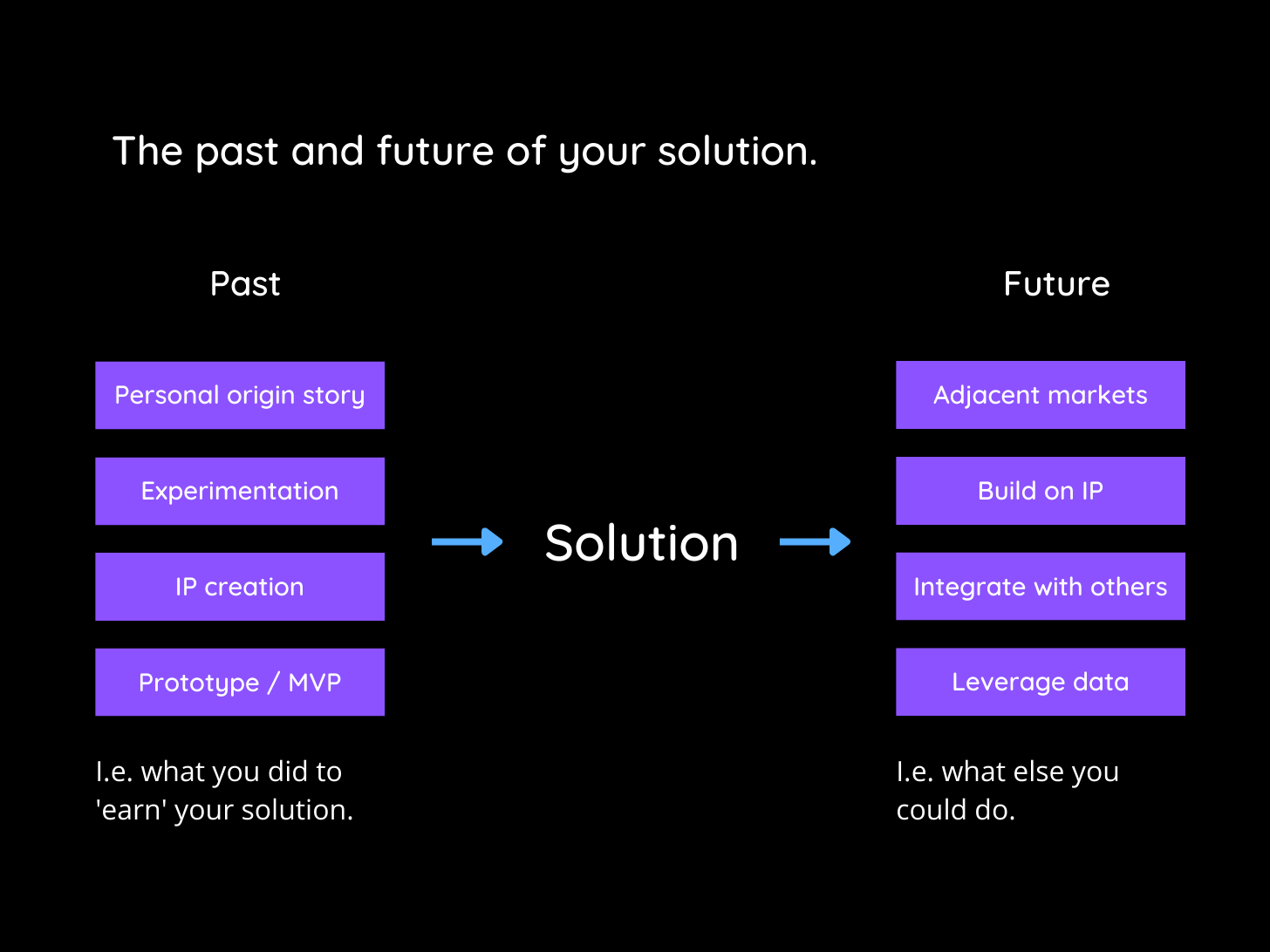
When you pitch a solution, provide some background about how you came up with it, like an origin story. It could be the story of you having a pain point in your own life. Or your team’s extensive industry experience.
Think of the backstory as part of your competitive moat: the more difficult it was to develop your solution the more difficult it is to copy. Unlike a product, which is what you’ve built at this moment in time, a solution is a continuity. It points to exciting ways you might develop it further.
Connecting the dots (or slides).
The AIR method will help you diagnose problems in your solution slide. But it also nicely sets up two other slides in your deck: competition and team.
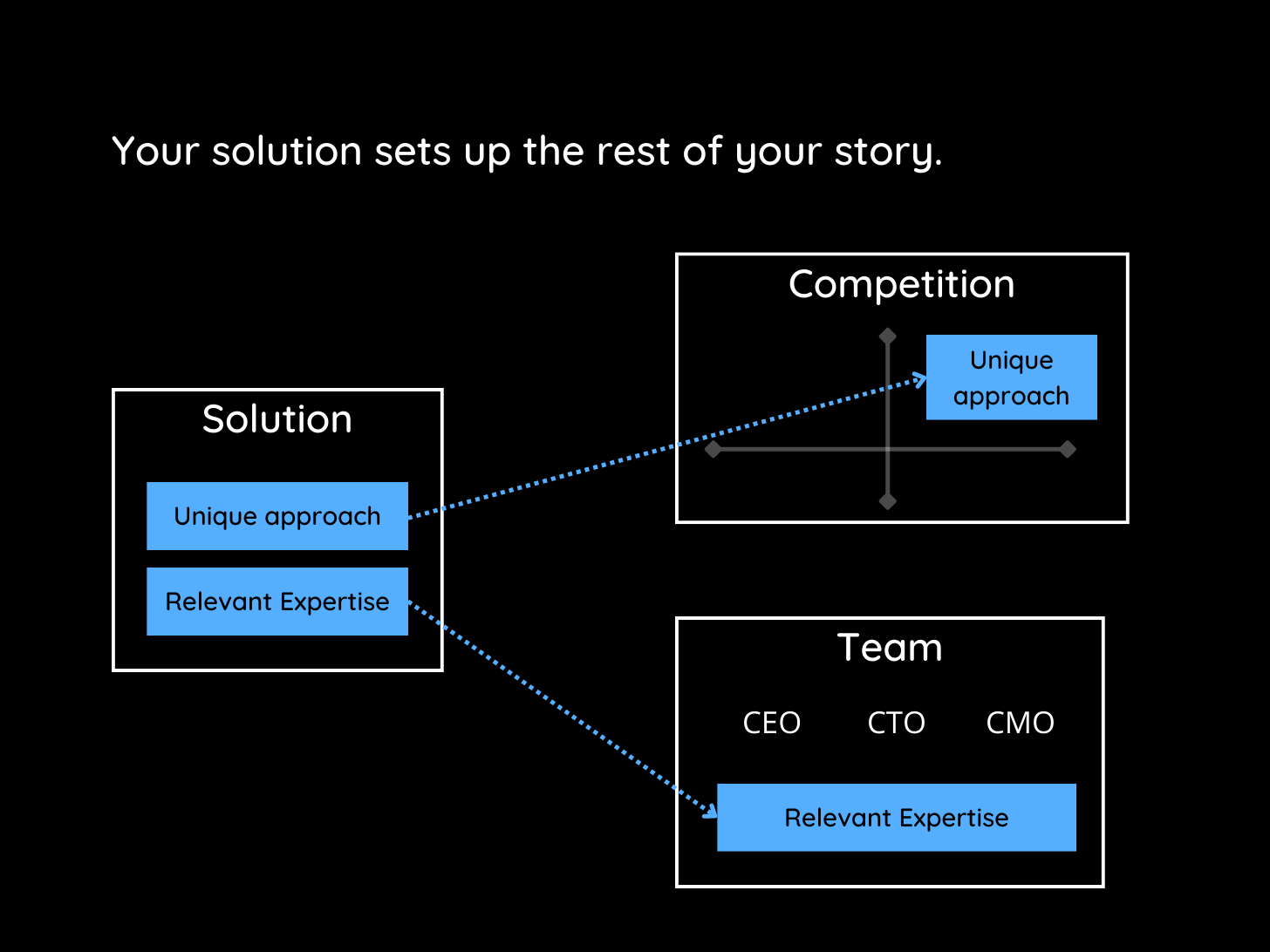
Your solution slide is linked to your competition slide. Your main competitive advantages should be your unique approaches, and vice versa.
The skills and experiences that were necessary to develop your solution should be the ones highlighted when you talk about your team.
Case Study: Mazlite.
Thank you to Mazlite for agreeing to let me use their slides in a mini case study. Mazlite is an early stage deeptech company.
Here are their Problem, Solution and Product slides:
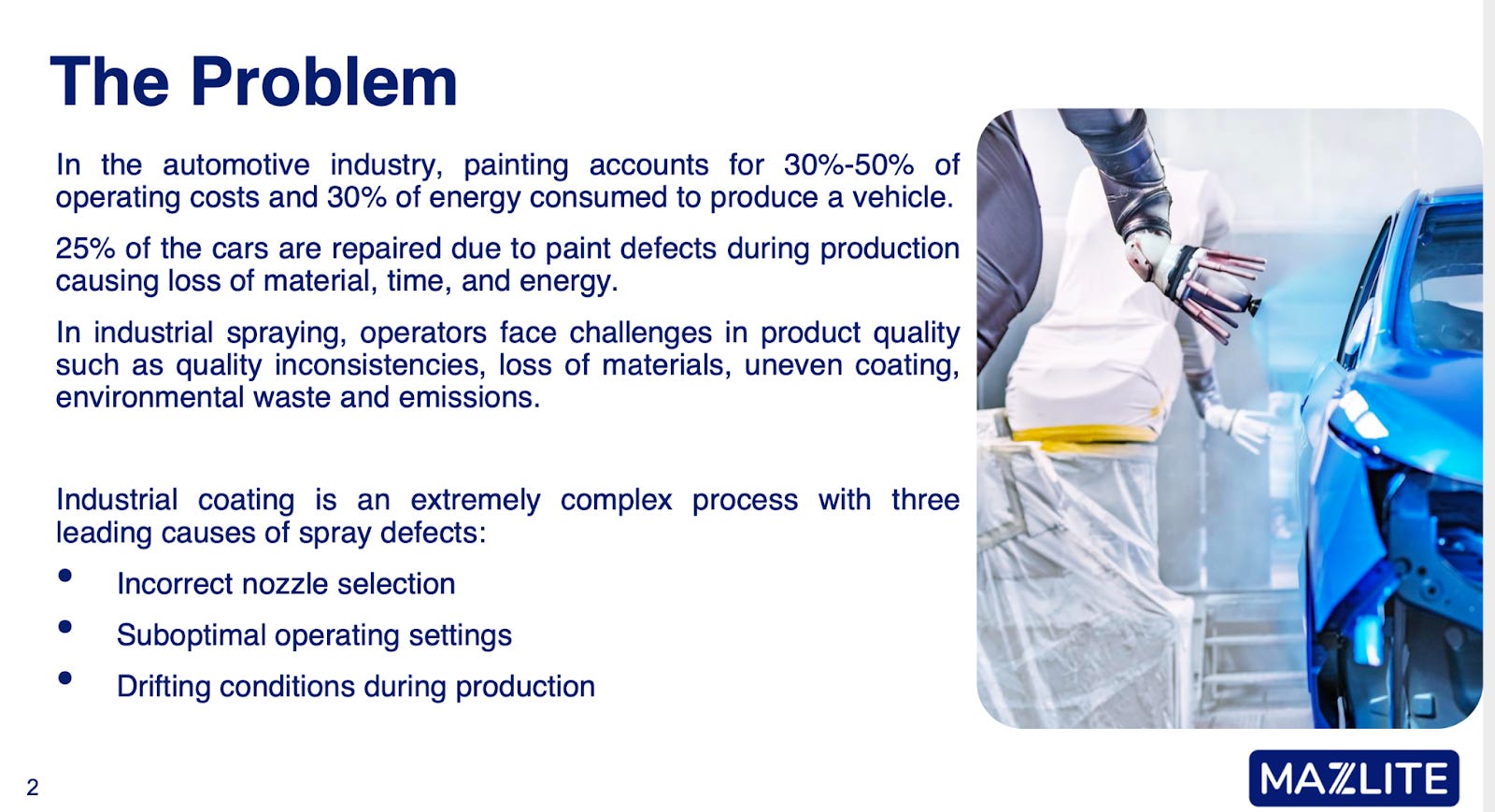
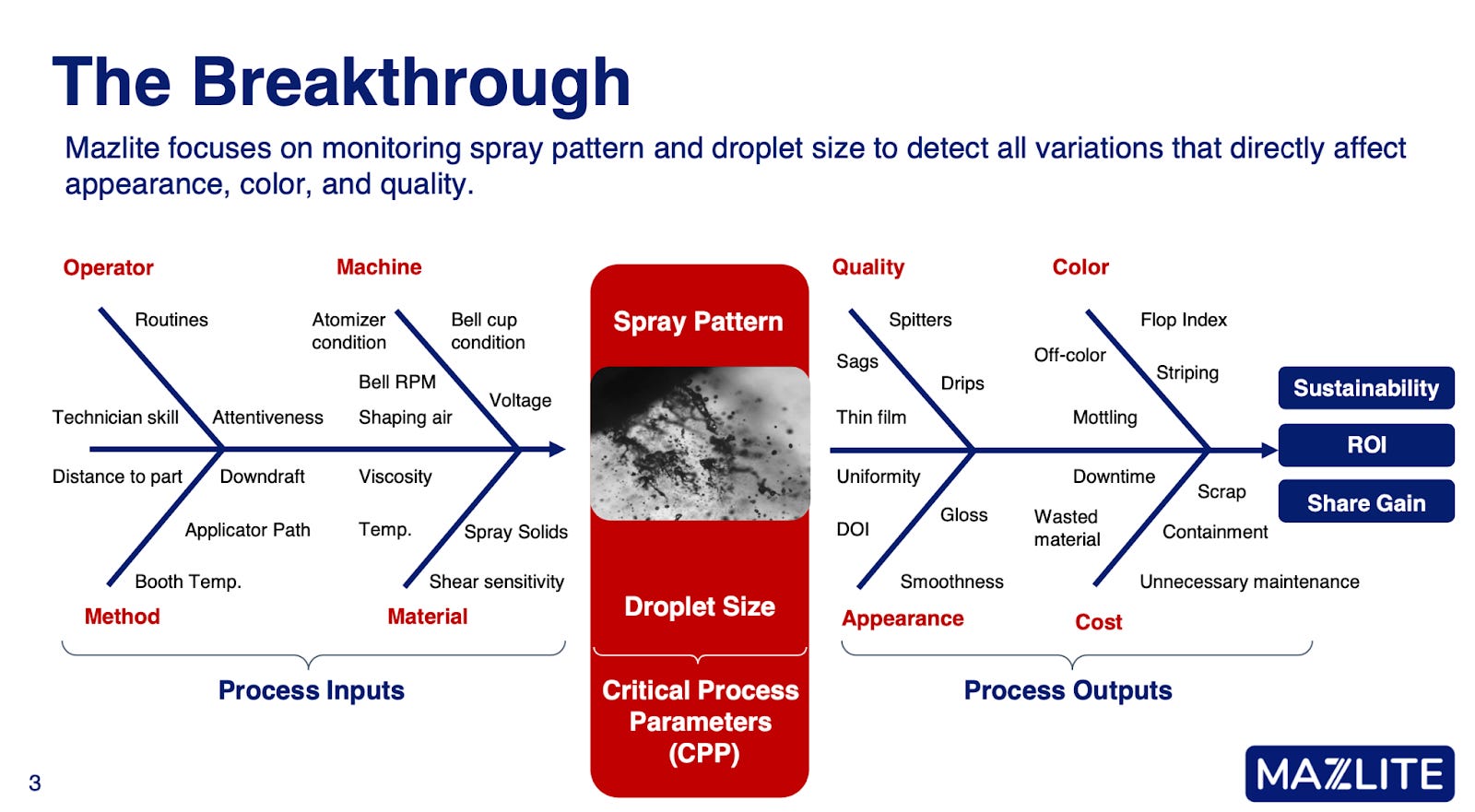
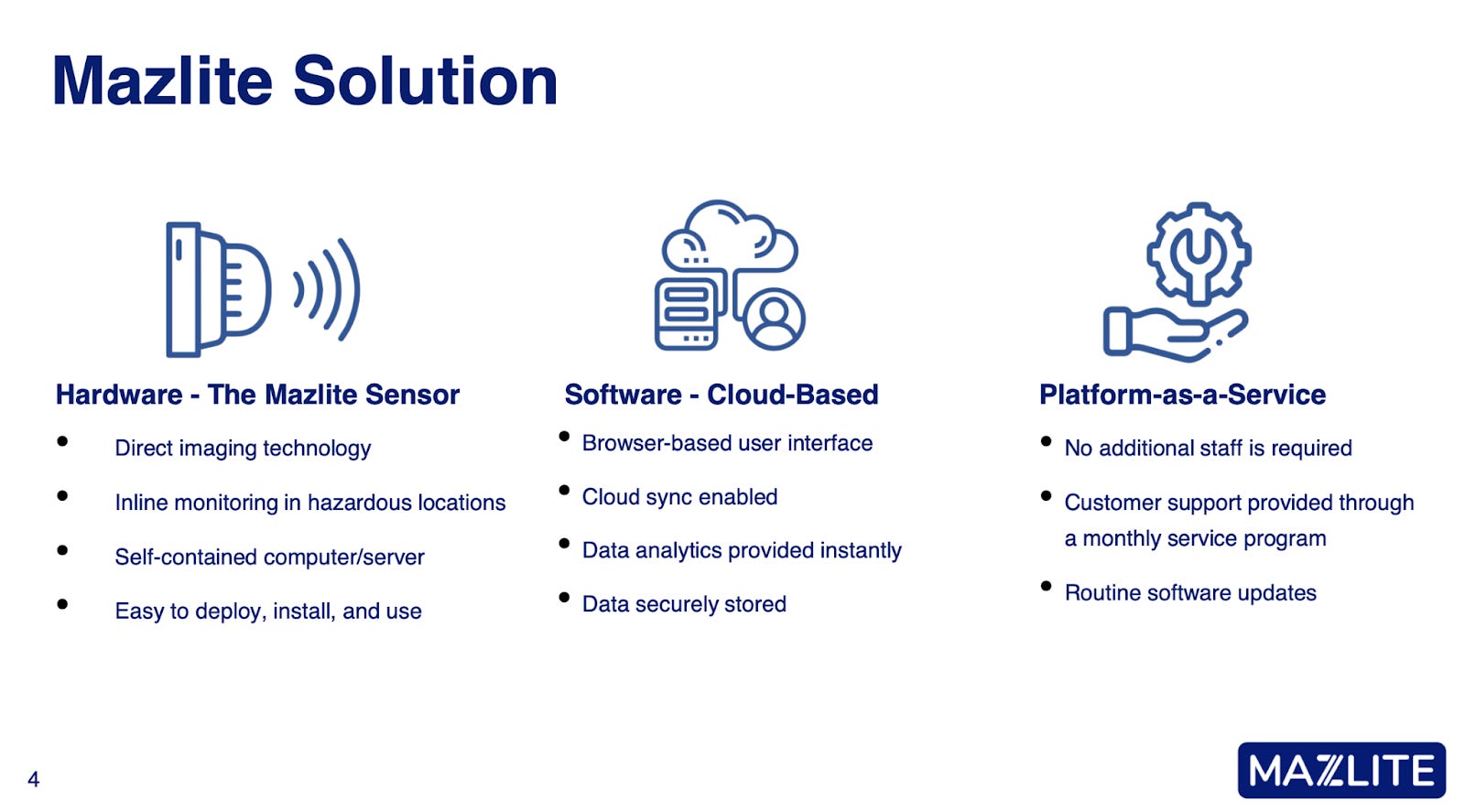
Analysis of the solution slide.
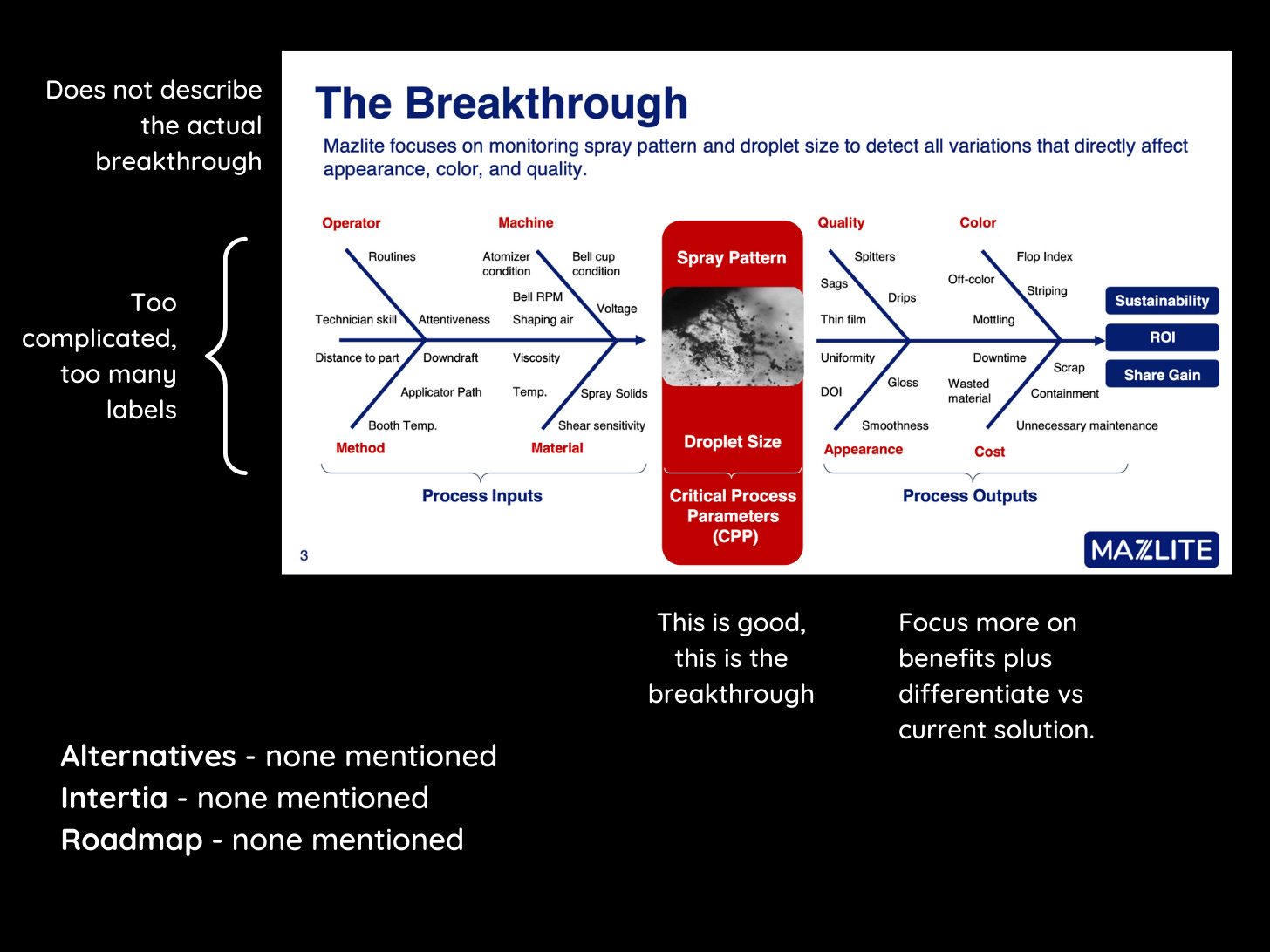
- Their description of the breakthrough says what they’re “focusing on” not what they’ve achieved that others have not.
- There is no mention of other approaches so we have no basis of comparison.
- There is no discussion of ease of adoption (until their product slide).
- There is no backstory even though I know there was scientific experimentation that led to this breakthrough.
Example redesigned slide.
Caveat: I’m suggesting an approach to improving their slide, not suggesting my words or design are better.
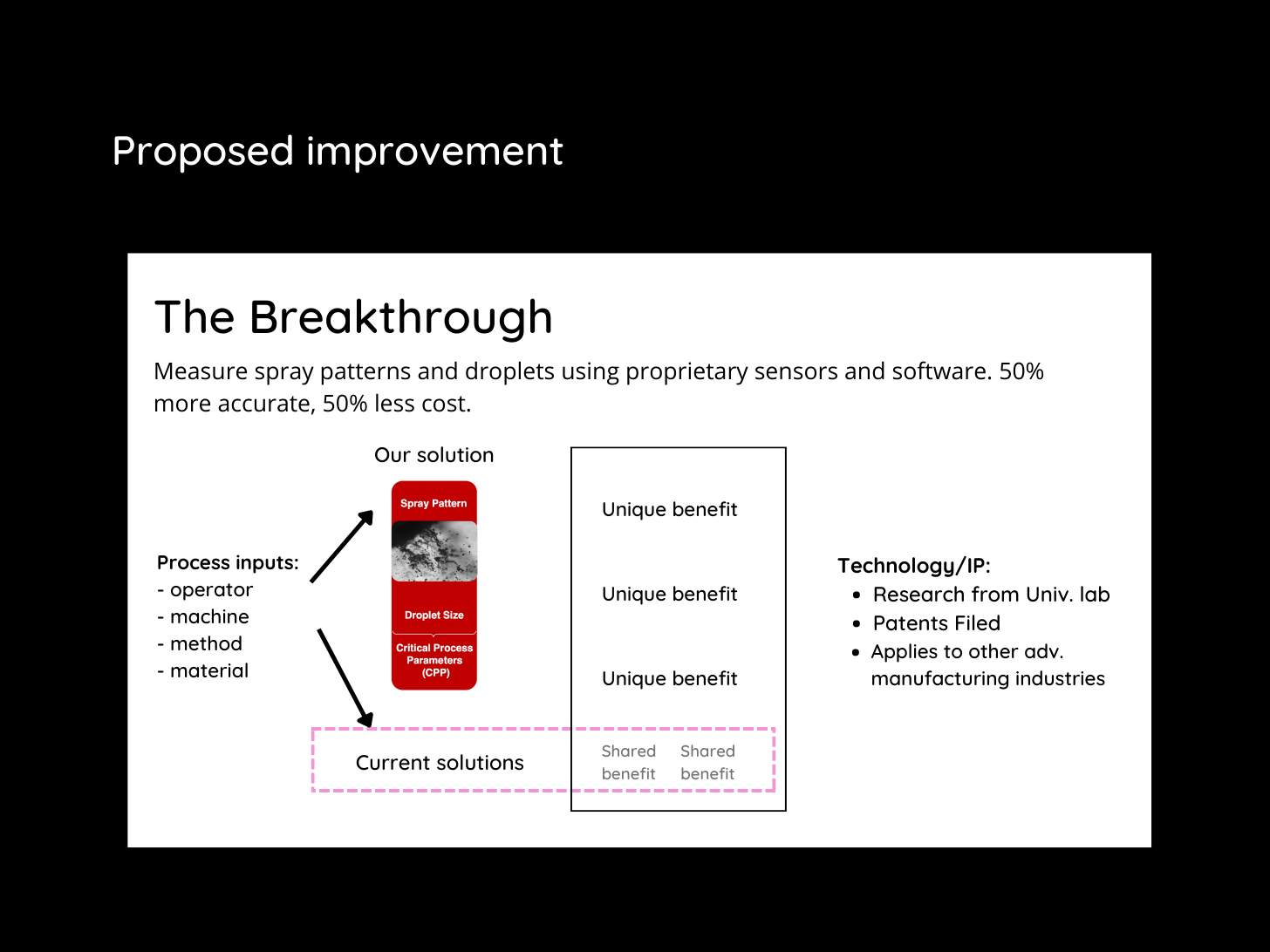
- The summary of the breakthrough is clearer and has a claim of superiority.
- My visual compares “us” vs” them” and shows what features are at parity and what are better. It recognizes alternatives and shows how they’re better.
- One of their unique benefits bullets could talk about ease of adoption. For disruptive tech it’s better address objections up front than wait for follow-up questions.
- Listing where the tech/IP came from, plus a single bullet about future directions, fills important details about the roadmap.
Overall there are fewer words in my version but a more complete story. It’s not necessary to explain everything, and it’s always a challenge deciding what to exclude. But in this example a little design and a few well-worded bullets goes a long way to making a better solution slide.
Checklist
- Have you separated your solution from your product?
- Do you talk about alternatives?
- Do you show how you overcome inertia?
- Is there a backstory and a roadmap?
- Is your solution linked to your competitive advantages?
- Does your team slide show skills/experiences from your solution?
« Previous Post: Problem || Next post: Product »
Subscribe for free to receive weekly posts, a copy of my ebook Pitching a Leap of Faith, and invitations to my weekly Pitch Masterclass.




